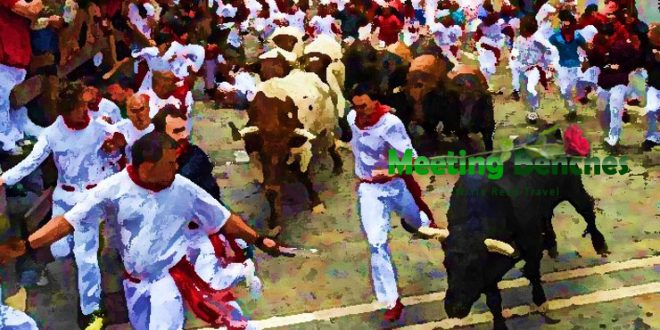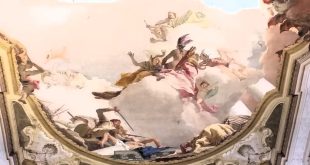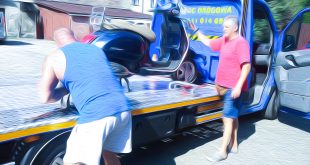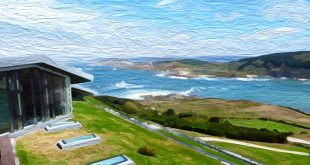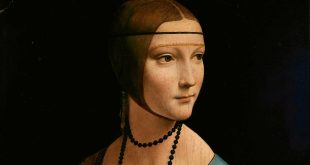5 artists, 19 tapas y 500 vinos: a Spanish dream.
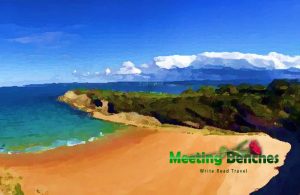 In Santander, most of the 1,200 objects on display in Flavióbriga Museum date from the period between the Upper Palaeolithic and the Iron Age (but you can admire also items from the Roman era, mostly from Julióbriga and Castro Urdiales (the ancient Flavióbriga). Over 3,000 square metres, it aims to show the relationship between man and the maritime world throughout history. A historical journey through an Spanish Sea? This town offers a profound look at different areas of the maritime world, with its Cantabrian Maritime Museum. A restoring pause in contact with nature and with the memories of a Spanish painter? Cabo Mayor Campsite, http://www.cabomayor.com/?lg=en located in the northernmost area in Santander (at a walking distance from Mataleñas Beach and Cabo Mayor Lighthouse). Its exceptional setting allows enjoying all the pleasant surroundings.
In Santander, most of the 1,200 objects on display in Flavióbriga Museum date from the period between the Upper Palaeolithic and the Iron Age (but you can admire also items from the Roman era, mostly from Julióbriga and Castro Urdiales (the ancient Flavióbriga). Over 3,000 square metres, it aims to show the relationship between man and the maritime world throughout history. A historical journey through an Spanish Sea? This town offers a profound look at different areas of the maritime world, with its Cantabrian Maritime Museum. A restoring pause in contact with nature and with the memories of a Spanish painter? Cabo Mayor Campsite, http://www.cabomayor.com/?lg=en located in the northernmost area in Santander (at a walking distance from Mataleñas Beach and Cabo Mayor Lighthouse). Its exceptional setting allows enjoying all the pleasant surroundings.
She was born in on an March day in Santander, with bilateral hip disarticulation, resulting in dwarfism and limping. Expressing how she felt, she had feel her painting to be a great way of escaping her physical troubles. At the age of 22 she travelled to Madrid to study paint art, because her father had stimulated her artistic interest. In 1906 MARIA BLANCHARD participated in the National Exhibition of Fine Arts. In those time she met the Mexican painter Diego Rivera. In Paris she also met Russian painter Angelina Beloff, with whom she started a long-lasting friendship. Seated Woman (one of her 1928’s oil on canvas, 100,5 x 73,5 cm), you can admire at the Museo de Bellas Artes, in Bilbao.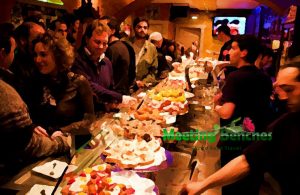
Its walls have a perimeter of 5 kilometres, which an evocative walk around the city, one of the most interesting and best conserved fortifications in Spain. You’re in Navarre, on the fertile Spanish plain of the river Arga sits Pamplona, a city full of history and deep-rooted traditions The bars in the historic quarter, they are namely on the streets San Nicolás, Comedia, San Gregorio, Estafeta and the Plaza del Castillo square. This is the perfect place for sampling the famous “pinchos” (snacks of the north of Spain), but also to know the story of a guitarist with a very lively life.
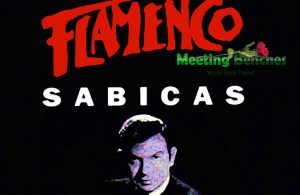 He was one of flamenco’s greatest guitarists (as a technician and a composer). He brought his art to concert halls and theaters, making it available to all classes. AGUSTÍN CASTELLON CAMPOS was born in Pamplona (Spain), into a March day, 1912. During time, he had become “Sabicas“, a flamenco guitarist of Romani origin. Leaving Spain during the Spanish Civil War, he went into exile in South America. He lived and married in Mexico City, having four children.
He was one of flamenco’s greatest guitarists (as a technician and a composer). He brought his art to concert halls and theaters, making it available to all classes. AGUSTÍN CASTELLON CAMPOS was born in Pamplona (Spain), into a March day, 1912. During time, he had become “Sabicas“, a flamenco guitarist of Romani origin. Leaving Spain during the Spanish Civil War, he went into exile in South America. He lived and married in Mexico City, having four children.
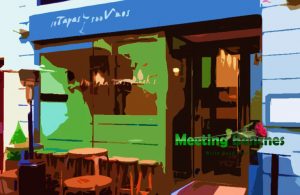 Its San Pedro Cathedral, is of the finest examples of Romanesque architecture in Spain. Jaca, https://www.youtube.com/watch?v=2BCd0BlF6pc the city with it’s stone walls, buildings and cobblestone streets it was the capital of Aragon until 1097. The surrounding mountains provide you a reflection of the extraordinary landscape of the Pyrenees. Dont forget: is still frequented today by hikers descending down the Valley of Aragon (from the mountain pass of Somport), on the French-Spanish border. Things to see in Jaca? Not only the 11th century Romanesque cathedral, but also pentagonal fortress and it’s many churches. For your remembering tastes, it’s well known for it’s tapas bars. Going in Calle Ramiro I 1, you can find “19 Tapas y 500 Vinos“. This is a quiete sit down place to enjoy some great tapas and special wines. They have medium and large portions of the tapas. The octopus? Exceptional.
Its San Pedro Cathedral, is of the finest examples of Romanesque architecture in Spain. Jaca, https://www.youtube.com/watch?v=2BCd0BlF6pc the city with it’s stone walls, buildings and cobblestone streets it was the capital of Aragon until 1097. The surrounding mountains provide you a reflection of the extraordinary landscape of the Pyrenees. Dont forget: is still frequented today by hikers descending down the Valley of Aragon (from the mountain pass of Somport), on the French-Spanish border. Things to see in Jaca? Not only the 11th century Romanesque cathedral, but also pentagonal fortress and it’s many churches. For your remembering tastes, it’s well known for it’s tapas bars. Going in Calle Ramiro I 1, you can find “19 Tapas y 500 Vinos“. This is a quiete sit down place to enjoy some great tapas and special wines. They have medium and large portions of the tapas. The octopus? Exceptional.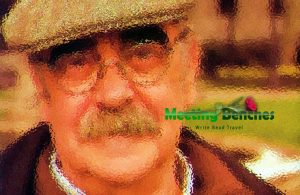
An important Aragonese singer-songwriter, began singing in an attempt to give relevance to his poetry. JOSE ANTONIO LABORDETA SUBIAS was born in Aragon (Spain), in a March day, 1935. His poetic songs (such as “Aragón”, “Canto a la Libertad”), were sung all around the Iberian Peninsula. “We Are” was a original ballad denouncing oppression and expressing hope in the future, where we are the same as our land, soft as clay, hard as rocks, where we’ve crossed time, leaving on the dry fields the fullness of our struggle.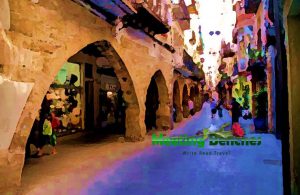
It is located by the river Segre, a tributary to the Ebre. Balaguer is in Catalonia. The town has a Gothic bridge over the Segre river, destroyed during the Spanish Civil War in the battle of “Cap de Pont”, rebuilt after the war. Another Gothic building is the Santa Maria Church, in the heights above the city. The town its outstanding for its cultural wealth and its stunning landscapes, the fruits of its past and its position. Special mention should be made of Pla d’Almatá (one of Catalonia’s most important archaeological sites). Here you can experience “Adventure in Montsec“, https://www.spain.info/en/actividades/detalle.html?id=A0000001760000009284 living the adventure on boat or the hiking in Mont Rebei, the christening flight Montsec sky and astronomical observation. Accommodations to choose? You can choose between L’Alcova or the Monastery of Les Avellanes, Hotel Port d’Ager or the Santuari del Sant Crist.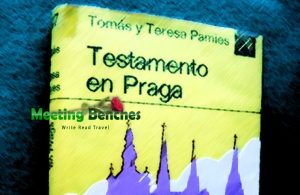
TERESA PAMIES I BERTRAN https://www.escriptors.cat/autors/pamiest/ was born in Balaguer (Spain) on one day in October 1919. At the age of ten she dedicated herself to selling a magazine of the Workers ‘and Peasants’ Block. Six years later she was a militant in the socialist party. She was 18 years old when she became the leader of the Young Socialists of Catalonia, becoming a political reference in Catalonia. In 1939 she was exiled to France, where she spent some time in a refugee camp, working on farms in exchange for food and lodging, until she participated in the French resistance during the Second World War. In 1947 she returned to Europe, settling in Prague and worked as a writer for the broadcasts of Radio Praga. In 1971 she returned to Catalonia, starting her literary career with her first book “Testament in Prague“, a great success in criticism and sales.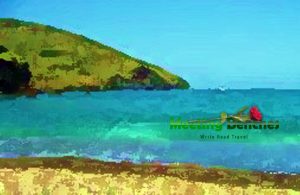
In Costa Brava, Portbou http://www.catalonia-valencia.com/portbou-travel-guide.html is a town with a special seafaring tradition. Its peculiar location turned this town into one of the main points of access into Spain. Its fishing port sits on a sunny coastal valley. Its historic quarter is surrounded by coastal hills and slopes covered with vegetation. Its coast washed by crystal waters, waiting for you with a splendid seabed for scuba diving and swimming. Playa de Portbou, its the main beach (around 270 metres long by 50 metres in width), is never too busy Even if the sea has erased its footprints on the sand, here you can perceive the creative atmospheres that inspired a Spanish painter.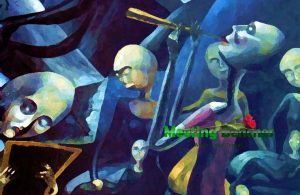
Born in Portbou (near the French border), ANGELES SANTOS TORROELLA was the eldest of eight children, into a family that led a poor life. In 1924 she was sent to a convent in Seville, where a mother superior she urged to foster her painting skills. Observing her paintings, isnt hard to grasp the split in her art, between the originality of her adolescent masterpieces and the conventional painting of the rest of her life. In 1933, she settled in Barcelona, where married the painter Emili Grau. When the civil war erupted, the couple left Spain for France. In 1937, she returned to live with her parents in Canfranc (in the Pyrenees), where she gave birth to a child. Back in Barcelona she was painting again, but under the influence of a bland impressionist style.
The intellectual property of the images that appear in this blog correspond to their authors. The sole purpose of this site, is to spread the knowledge of these artists and that other people enjoy their works. To pursue this issue, you can digit: http://meetingbenches.com/2018/06/traveling-in-the-northern-spain-a-creative-journey-with-five-cities-in-twenty-images/
 Meeting Benches World art in all forms
Meeting Benches World art in all forms
